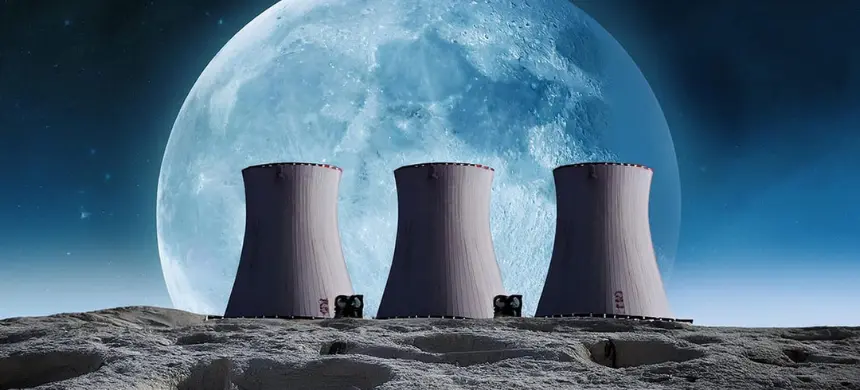India and China, two historically rival nations, are set to join forces with Russia in building a nuclear power plant on the Moon, according to reports from EurAsian Times and Russia’s state news agency, Tass. The announcement came from Alexey Likhachev, head of Rosatom, Russia’s state nuclear energy corporation, marking a significant step in India’s long-term space exploration goals, including a manned lunar mission by 2040 and the establishment of a lunar base.
Speaking at the Eastern Economic Forum in Vladivostok, Likhachev emphasized the international scope of the project, stating, “Our Chinese and Indian partners are very interested in this,” signaling the cooperative nature of the venture.
The ambitious project, led by Rosatom, involves constructing a small nuclear power plant capable of generating up to half a megawatt of energy. This power will be essential to support the functioning of a lunar base. China and India are keen to contribute to this groundbreaking lunar energy solution, which will also align with their own space exploration objectives.
Read More: NATO Supports Ukraine’s Right to Strike Deeper into Russia
Roscosmos, Russia’s space agency, announced in May that work on the plant was already underway, with the goal of providing power to a collaborative lunar base. This base is part of the International Lunar Research Station (ILRS) project, a joint effort between Russia and China, with India’s involvement further advancing its lunar ambitions.
The Race for Lunar Nuclear Power
Russia and the United States are both exploring nuclear energy as a sustainable power source for future lunar bases. NASA is also assessing the viability of nuclear reactors to support long-term lunar settlements, as consistent energy is crucial for lunar infrastructure.
Nuclear energy is regarded as the most reliable power solution for establishing a lunar colony. Experts highlight its necessity for powering essential activities such as heating, refrigeration, drilling, and operating lunar rovers.
The construction of a nuclear power plant on the Moon is no small feat. Russia has indicated that much of the work could be completed autonomously, reducing the need for direct human involvement—a testament to advances in space technology.
India’s Diplomatic Strategy and Lunar Ambitions
India is strategically balancing its relations with both the U.S. and Russia. While collaborating with the U.S. on the Gaganyaan mission, India is also aligning itself with China and Russia through this lunar power initiative.
Indian Space Research Organisation (ISRO) Chairman S. Somanath outlined India’s lunar exploration roadmap during a symposium on November 28, 2023. Building on recent successes like Chandrayaan-3, which made India the fifth country to land on the Moon, ISRO is gearing up for human spaceflight, aiming to send astronauts to the Moon by 2040. This lunar power project could accelerate India’s plans for establishing lunar infrastructure.
Despite being slightly behind the timelines set by Russia and China, India’s involvement in the nuclear power plant project marks a significant leap in global lunar exploration. Technological solutions are nearing completion, and Rosatom aims to construct the plant with minimal human intervention.
Since 2021, Roscosmos and China’s National Space Administration have been collaborating on the ILRS project. However, geopolitical tensions, particularly with the U.S., may complicate international cooperation on the lunar base.
Importance of Nuclear Power for Moon Exploration
Nuclear energy is crucial for sustaining a long-term presence on the Moon, as it provides a continuous power supply unlike solar energy, which is hindered by the Moon’s 14-day-long nights. Both Russia and NASA see nuclear reactors as the most reliable energy source for future lunar bases.
India’s participation in this project underscores its growing influence in space exploration. While the complexity of building a nuclear plant on the Moon presents challenges, safety concerns have been addressed, with experts reassuring that nuclear fuel transport to the Moon poses minimal radiation risks. Advanced safety measures ensure that reactors will automatically shut down in case of any malfunction, mitigating potential hazards.
As India collaborates with Russia and China in this endeavor, it marks a new chapter in the race to establish a permanent human presence on the Moon, powered by nuclear energy.











